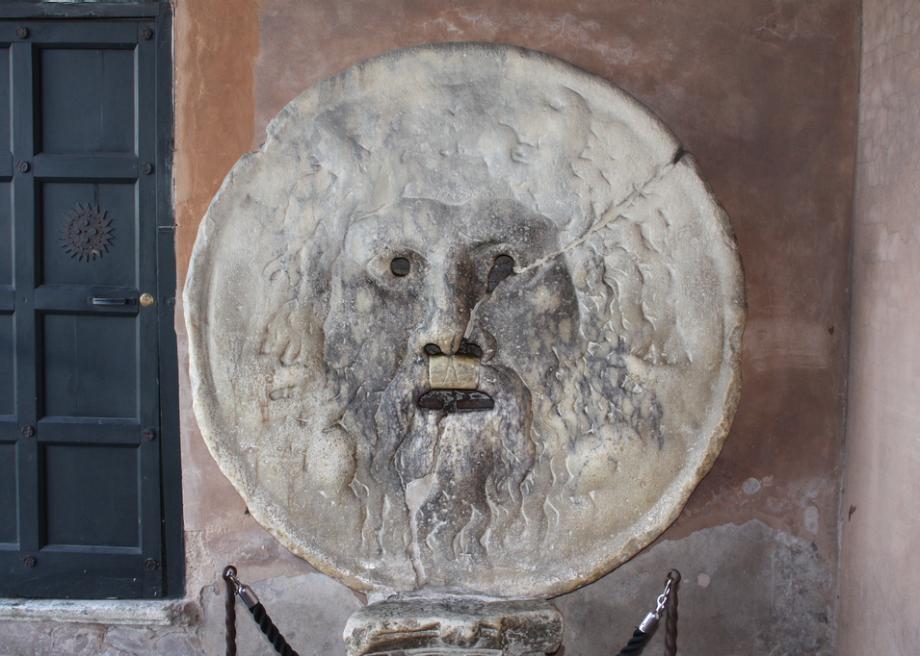Italy’s Mouth of Truth

Atlas Obscura on Slate is a blog about the world’s hidden wonders. Like us on Facebook and Tumblr, or follow us on Twitter.
Long before the modern lie detector and its harmlessly jittering graphs and wires were invented, the untruthful faced a much more severe fate between the jaws of the Bocca della Verità, or Mouth of Truth (or Mouth of Fate), an ancient carving that is said to bite the hands off of liars.
While no one is exactly sure when or why the frieze was created, there are a number of theories. Dating back to about the first century A.D., the Mouth of Truth is a tall stone disc carved with a humanoid face that has holes for eyes and a gaping mouth. The original purpose of the large medallion has been theorized as everything from a ceremonial well cover, to a piece of fountain decoration, to a manhole cover. The face has been said to represent a pagan god, although exactly which one is up for debate, with scholars guessing at everyone from forest god Faunus to sea god Oceanus to a local river god.
While the origin is up for debate, the unifying legend surrounding the stone carving is that if one were to stick his or her hand inside the disc’s mouth and tell a lie, the rocky maw would bite the offending hand off. This belief seems to have originated during the Middle Ages when the disc was supposedly used during trials. According to legend, the accused put his or her hand in the slot, and, if found to be untruthful, a hidden axman would lop off the appendage. While this use seems to be apocryphal, the superstition persists to this day.
The Mouth of Truth, which rests outside the doors of the Santa Maria in Cosmedin church, has been used as a whimsical lie detector in a number of movies and video games, most famously in the 1953 romance Roman Holiday, in which the carving was a major plot device.
More wonders to explore:
